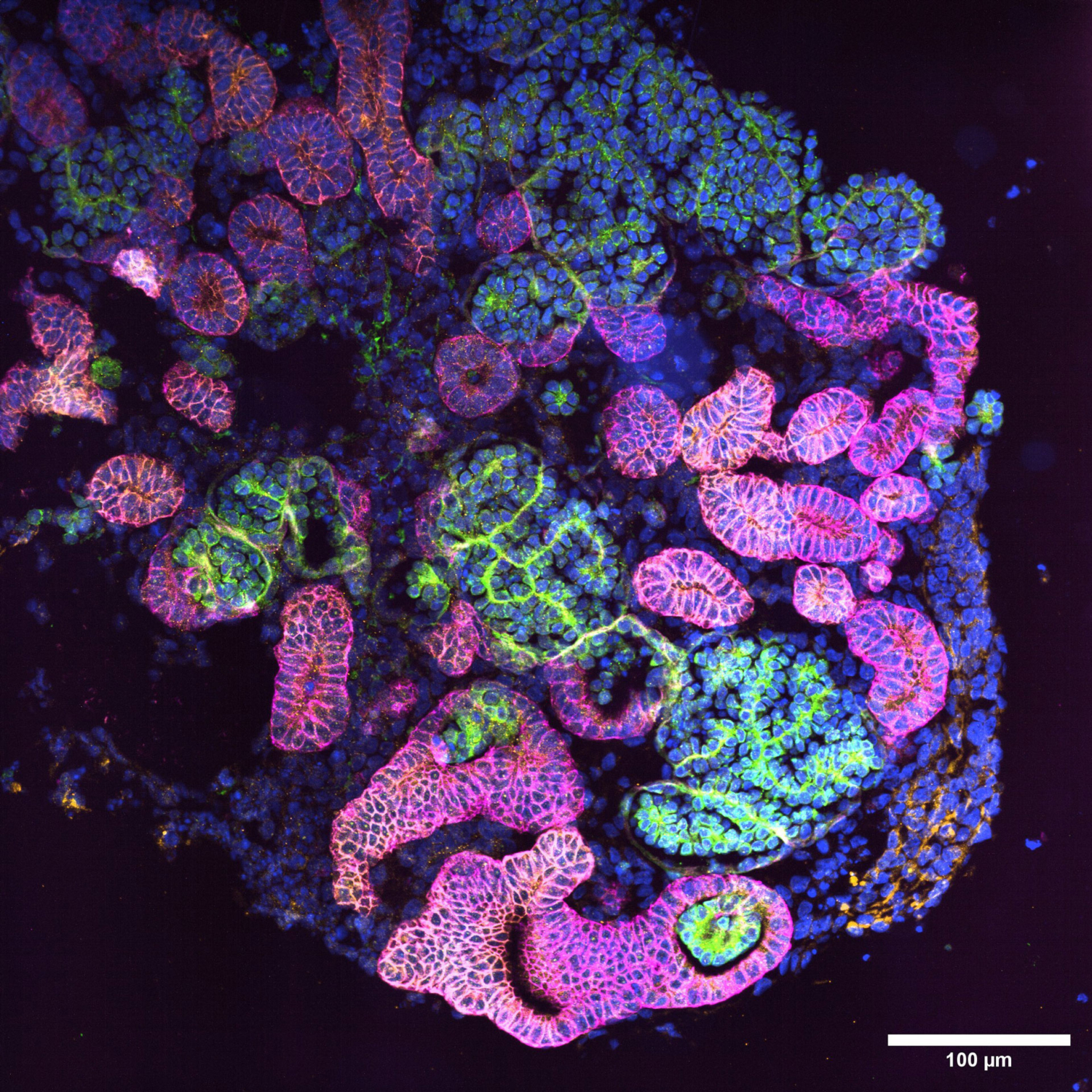This image is part of the IHB InSight series, featuring compelling scientific images of the latest innovative human model systems work done by IHB scientists. For more images, go to our News feed.

Kidney organoids represent a powerful and versatile in vitro platform that is significantly accelerating research into fundamental kidney development, disease mechanisms, and drug discovery. This image shows the immunofluorescence staining of the first kidney organoid cultured at IHB. This organoid is derived from iPSCs, induced pluripotent stem cells, after 21 days of differentiation and is expressing key markers characteristic of native kidney cell types: EpCAM-positive epithelial cells (magenta), Nephrin-expressing podocytes (green), and CDH1-expressing distal tubules (orange), and cell nuclei (blue). Thus the staining shows that the kidney organoid’s cell composition mimics a key subset of the cell types seen in actual kidneys. The pharmaceutical industry can leverage the physiological relevance of these organoids for high-throughput screening of novel drug candidates, and evaluating drug efficacy and toxicity in a human-specific context. This image was generated by Saba Rezakhani and Irineja Cubela.